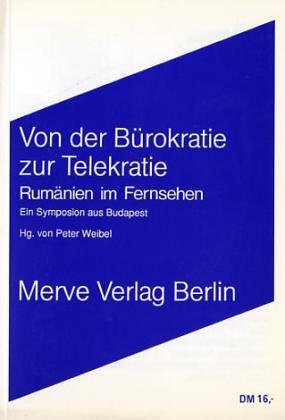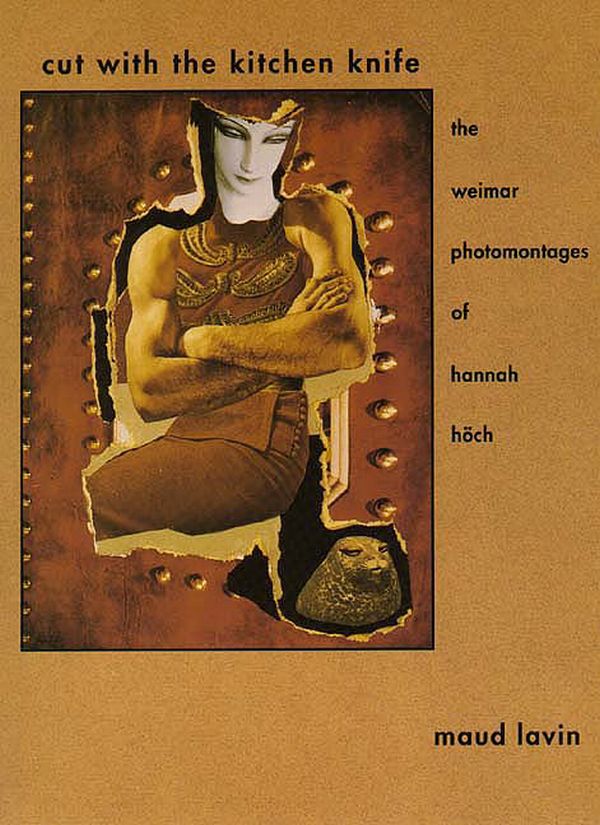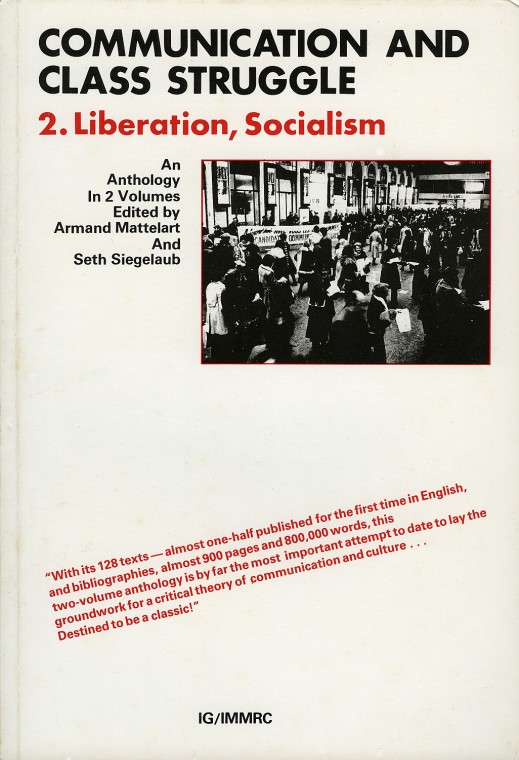Keiko Sei (ed.): Von der Bürokratie zur Telekratie. Rumänien im Fernsehen. Ein Symposion aus Budapest (1990) [German]
Filed under book | Tags: · 1989, mass media, media, media theory, revolution, romania

The publication resulting from the symposium The Media Are With Us!: The Role of Television in the Romanian Revolution which took place at Mücsarnok, Budapest, on 6-7 April 1990.
Contributions by Paolino Accolla, László Beke, Magda Cârneci, Mihaela Cristea, Serge Daney, Jean-Paul Fargier, Vilém Flusser, Ingo Günther, Veijo Hietala, Ari Honka-Hallila, Erkki Huhtamo, Derrick de Kerckhove, Richard Kriesche, Geert Lovink, Margaret Morse, Morgan Russel, Jeffrey Shaw, Tjebbe van Tijen, Paul Virilio, and Peter Weibel.
Translated by Almuth Carstens, Birger Ollrogge and Monika Rauschenbach
Publisher Merve, Berlin, 1990
Internationaler Merve-Diskurs series, 157
ISBN 3883960772, 9783883960777
165 pages
via Neda Genova
Review: Eveline Lubbers (Mediamatic, 1991).
PDF (8 MB)
See also video documentary from the event.
Comment (0)Maud Lavin: Cut With the Kitchen Knife: The Weimar Photomontages of Hannah Höch (1993)
Filed under book | Tags: · art, art history, avant-garde, collage, dada, gender, mass media, montage, photomontage, weimar republic, women

“The women of Weimar Germany had an uneasy alliance with modernity: while they experienced cultural liberation after World War I, these “New Women” still faced restrictions in their earning power, political participation, and reproductive freedom. Images of women in newspapers, films, magazines, and fine art of the 1920s reflected their ambiguous social role, for the women who were pictured working in factories, wearing androgynous fashions, or enjoying urban nightlife seemed to be at once empowered and ornamental, both consumers and products of the new culture. In this book Maud Lavin investigates the multi-layered social construction of femininity in the mass culture of Weimar Germany, focusing on the intriguing photomontages of the avant-garde artist Hannah Höch.
Höch, a member of the Berlin Dada group, was recognized as one of the most innovative practitioners of photomontage. In such works as Dada-Ernst and Cut with the Kitchen Knife, she reconstructed the wonderfully seductive mass media images of the New Woman with their appeal intact but with their contours fractured in order to expose the contradictions of the new female stereotypes. Her photomontages exhibit a disturbing tension between pleasure and anger, confidence and anxiety. In Weimar—as today—says Lavin, the representation of women in the mass media took on a political meaning when it challenged the distribution of power in society. Höch’s work provides important evidence of the necessity for women to shape the production and reception of the images that redefine their role.”
Publisher Yale University Press, 1993
ISBN 0300047665, 9780300047660
xvii+260 pages
Reviews: Johanna Drucker (Art Journal 1993), Susan Sensemann (Design Issues 1994), Greil Marcus (2014).
PDF (assembled from scans on author’s Academia.edu page, 24 MB, no OCR)
Comment (0)Armand Mattelart, Seth Siegelaub (eds.): Communication and Class Struggle, 2: Liberation, Socialism (1983)
Filed under book | Tags: · aesthetics, communication, communism, everyday, information, left, life, machine, marxism, mass media, media, political economy, politics, socialism, theory

“Communication and Class Struggle, a two-volume work, is the first general marxist anthology of writings on communication, information and culture. Its purpose is to analyse the relationship between the practice and theory of communication and their development with the context of class struggle. Armand Mattelart and Seth Siegelaub, the editors, have selected more 128 essential marxist and progressive texts originating in over 50 countries and written since the mid-nineteenth century to explain three interrelated phenomena: (1) how basic social, economic and cultural processes condition communication; (2) how bourgeois communication practice and theory have developed as part of the capitalistic mode of production; and (3) how in the struggle against exploitation and oppression, the popular and working classes have developed their own communication practice and theory, liberated mode of communication, culture and daily life.
The second volume provides an analysis of the development of popular and working-class communication and culture, its theory and practice under different political-social and historical conditions, and its contemporary expression. The book contains 64 texts. 38 are published for the first time in English, and some texts appear for the first time in any language. In addition, it includes a 650-entry bibliography.” (from the back cover)
Publisher International General, New York, and International Mass Media Research Center (IMMRC), Bagnolet, 1983
ISBN 0884770192, 9780884770190
438 pages
Review: Dallas W. Smythe (Journal of Communication 1985, p 218ff).
PDF (40 MB, updated to OCR’d version on 2017-10-30 via Memory of the World)
See also Volume 1.

